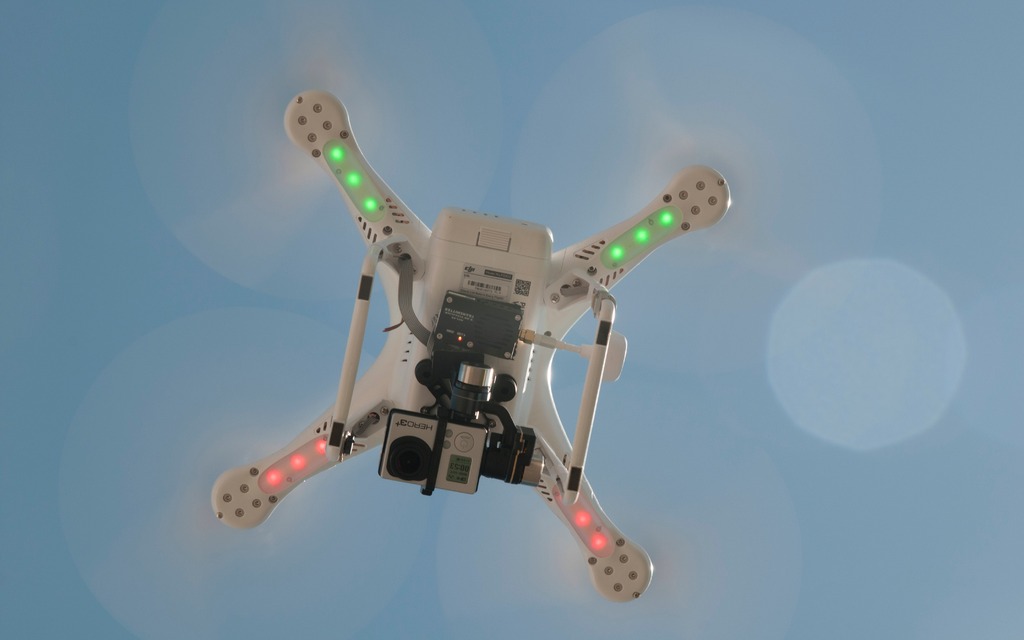Me and my Drone
by Éric Plamondon - FPAA, National Bank Insurance paid contributor
We see them on the sides of racetracks, we talk about them on the news, Amazon plans to use them for delivery, Renault wants to build them into one of its cars, and they’re sold in toy stores… Soon you, too, will be tempted by a drone.
What is a drone?
Last February, Renault launched their new concept car, the Kwid. Its unique feature? The car comes equipped with a flying companion, a drone. It can relay photos of your surroundings, fly ahead to warn you of traffic, and detect obstacles on the road.
A drone is an unmanned aerial vehicle or, more commonly, a remote controlled vehicle. The first thing that probably springs to mind when I say the word “drone” is an enormous military drone, able to take photos from extreme altitudes and launch bombs in hostile places, but those aren’t the drones I want to talk to you about. There’s enough about them on the six o’clock news. No, I want to talk to you about civil and toy drones.
Transport Canada defines civil drones as “any unmanned aircraft that performs a useful mission and can be remotely controlled or has autonomous flight capability.” It becomes a model aircraft when its total weight does not exceed 35 kg, and is “mechanically driven or launched into flight for recreational purposes and that is not designed to carry persons or other living creatures.” So, they can’t be used to fly your hamster around.
What are they for?
Other than the aforementioned examples, a drone can be used to take aerial photos at a family picnic, it can take photos of structures or buildings, it can deliver pizza or… deliver a package. In fact, Amazon is eventually planning to do a good part of their deliveries using drones… But knowing that Amazon processes 426 items a second, I can’t help but wonder if we’d even be able to see the sky under all those drones...
In your daily life, unless you’re interested in the Renault Kwid, you would doubtless be drawn to the photo and video capabilities of a drone. Because really, who wouldn’t want to capture a shot from an extraordinary viewpoint of a test drive on a closed-circuit track? The type of shot that normally, only a fully equipped film team could get?*
Ok, I want one!
Before heading out to the nearest toy store to buy a drone for anywhere from $50 to $500, there are few things you should know.
First of all, if you got carried away thinking of the possibilities inherent in this type of toy, know that spying on your neighbour in the shower is punishable by a prison sentence of up to 5 years for voyeurism. That’s enough to pour cold water on those aspirations. Even if the neighbour is in the backyard barbequing, filming them without their permission (or even flying over their property!) puts you at risk for being accused of violation of that person’s privacy, violation of their right to peaceful enjoyment of property, or even criminal harassment. Might be best to stick to taking pictures of birds, scenery, and yourself (selfie 2.0?).
And in terms of insurance, you’ll hit a snag. All aircraft are excluded from home insurance, in terms of personal property as well as civil liability. The federal laws governing aeronautics defines aircraft as “any machine capable of deriving support in the atmosphere from the reactions of the air.”
Of course, I’m only talking about home insurance here. Specialized aviation insurance is out of my area of expertise…
The one exception
The Renault Kwid, that I spoke about earlier, comes with a drone. As a result, the drone counts as part of the equipment and accessories of the car, and would theoretically be covered by car insurance. Thankfully, the question is only a theoretical one, as is the concept for the car. But if one day it became a reality, I’d be willing to bet that insurers and legislators will be having some interesting conversations… and some serious headaches.
*If you opt for this, remember that your car insurance never covers you in these situations (test drive on a closed-circuit track).







